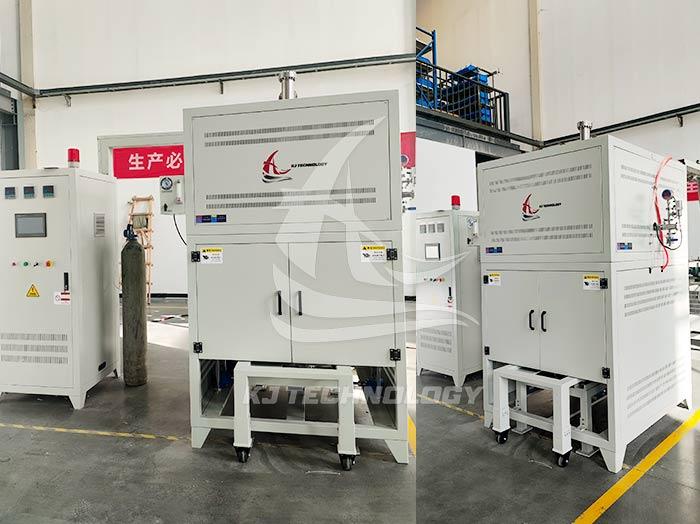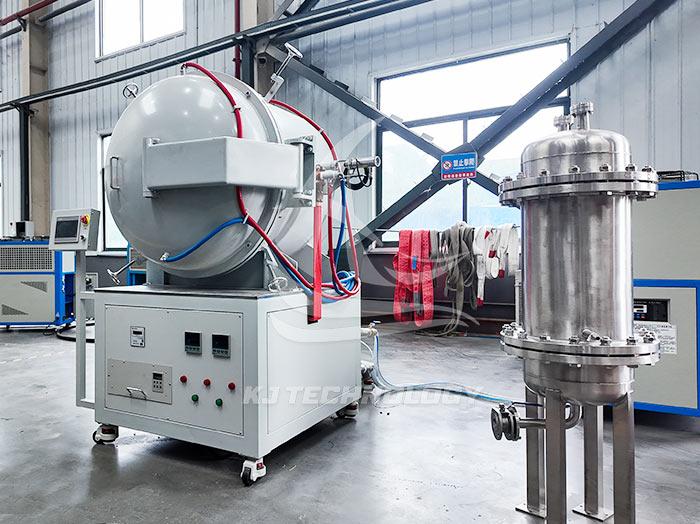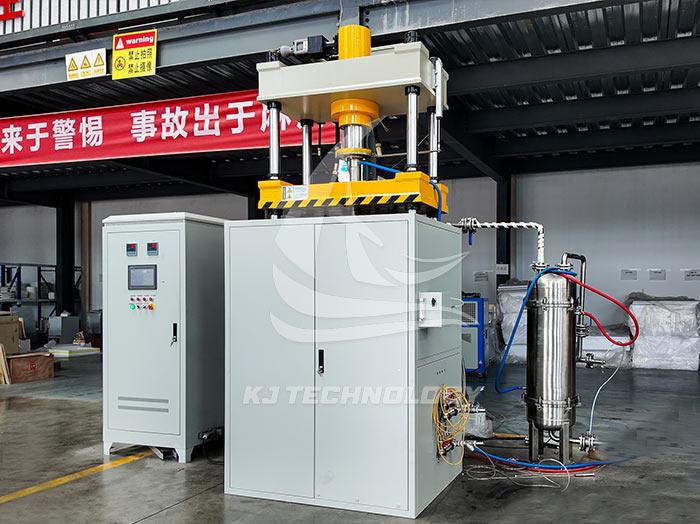Precautions for selecting laboratory vacuum furnaces
 06-26-2025 Author: KJ technology
06-26-2025 Author: KJ technology
The selection of laboratory vacuum furnaces requires comprehensive consideration of various factors such as process requirements, equipment performance, operational safety, and long-term costs. The following provides a professional and structured selection guide from four dimensions: core parameters, functional design, usage scenarios, and supplier services:
1. Core parameter matching
Temperature range and accuracy
Requirement matching: Based on the selection of experimental materials (such as metal heat treatment requiring 1200-1600 ℃, semiconductor annealing requiring 400-800 ℃).
Accuracy requirement: High precision experiments (such as nanomaterial synthesis) require a temperature control of ± 1 ℃, while ordinary experiments can be relaxed to ± 5 ℃.
Example: A university laboratory needs to prepare high-temperature superconducting materials by selecting a graphite heating vacuum furnace with a maximum temperature of 1800 ℃ and an accuracy of ± 0.5 ℃.
Vacuum degree and pumping rate
Vacuum level:
Coarse vacuum (10 ³ -10 ⁻¹ Pa): used for annealing and drying.
High vacuum (10 ⁻¹ -10 ⁻⁴ Pa): used for coating and sintering.
Ultra high vacuum (<10 ⁻⁴ Pa): used for semiconductor and quantum material research.
Extraction rate: High extraction rate is required for large chambers (such as a combination of diffusion pump and mechanical pump), while single-stage mechanical pump can be selected for small chambers.
Case: A coating experiment at a certain research institute requires a vacuum degree of 10 ⁻ Pa, and a combination of "molecular pump+dry pump" is selected with a pumping speed of 500 L/s.
Heating method and uniformity
Heating method:
Resistance heating: suitable for medium and low temperatures (<1200 ℃), with low cost.
Induction heating: suitable for high temperatures (>1500 ℃), with fast heating.
Microwave heating: suitable for special materials (such as ceramics), with good uniformity.
Uniformity index: ± 1-5 ℃ (depending on cavity size), which needs to be verified by multi-point thermocouples.
Comparison: Uniformity of resistance heating furnace ± 3 ℃, uniformity of induction heating furnace ± 1.5 ℃ (under the same specifications).
2. Functional and structural design
Material and size of the cavity
Material selection:
Stainless steel: corrosion-resistant, suitable for general experiments.
Quartz/Ceramic: High purity, suitable for semiconductor and optical materials.
Size planning: Select according to the sample size and reserve 20% space to ensure uniform airflow.
Example: A laboratory needs to process wafers with a diameter of 50mm and select a quartz cavity with a diameter of 80mm to ensure process stability.
Atmosphere control and intake system
Gas type: Supports single or multiple gas mixtures such as N ₂, Ar, H ₂, O ₂, etc.
Flow accuracy: High precision experiments require a mass flow meter (MFC) with an accuracy of ± 0.5% F.S.
Case: A catalytic experiment requires precise control of the H ₂/N ₂ ratio (1:9), and an intake system with dual MFCs is selected.
Safety and Protection Design
Safety functions: over temperature protection, leakage protection, water cooling cut-off alarm, vacuum leakage alarm.
Protection level: IP54 or above, preventing dust/water from splashing in.
Compliance: Complies with international safety standards such as CE and UL.
3. Adaptation to usage scenarios
Experimental type
Heat treatment: Pay attention to temperature uniformity and heating rate.
Coating: Pay attention to vacuum degree and gas control accuracy.
Sintering: Pay attention to pressure control (optional hot press furnace) and atmosphere protection.
Example: A laboratory requires CVD coating and chooses a high vacuum furnace with a gas premixing device.
Convenience of operation
Automation level: PLC control+touch screen operation, supporting multi-stage program heating.
Data recording: Built in data logger or support for external computer to store temperature and vacuum curves.
Maintainability: Modular design makes it easy to replace vulnerable parts such as heating elements and vacuum pumps.
Extensibility
Interface compatibility: Reserved interfaces for vacuum gauges, thermocouples, gas flow meters, etc., for easy upgrading.
Expansion of cavities: Multiple cavities can be connected in series to improve experimental efficiency.
4. Suppliers and Costs
Supplier selection
Qualifications: Priority should be given to manufacturers with ISO certification and CE certification.
Case: A laboratory chose a German brand because it provides global warranty and 24-hour response service.
Word of mouth: Refer to peer reviews and avoid choosing low-priced and low-quality manufacturers.
Cost analysis
Initial cost: Equipment price (50000 to 5 million yuan, depending on specifications).
Operating costs: energy consumption (about 5-10 kW/h for resistance furnaces and 15-30 kW/h for induction furnaces), consumables (vacuum pump oil, heating elements).
Maintenance cost: The average annual maintenance cost is about 5% -10% of the equipment price.
Cost effectiveness: The price of a domestically produced furnace is only one-third of that of an imported furnace, but its lifespan is 30% shorter and requires comprehensive evaluation.
after-sale service
Warranty period: 1-3 years, with a longer warranty period for core components such as vacuum pumps.
Training: Provide operation and maintenance training to ensure independent use by users.
Spare parts supply: Common spare parts (such as O-rings and heating wires) have sufficient inventory and a delivery cycle of less than one week.
5. Summary and Recommendation
Selection logic:
Clear requirements: temperature, vacuum degree, atmosphere, size.
Comparison parameters: core performance, functional design, cost.
Verify supplier: qualifications, reputation, service.
Recommended configuration:
Basic experiment: Resistance heating+mechanical pump vacuum furnace, with a budget of 50000 to 200000 yuan.
High precision experiment: induction heating+molecular pump vacuum furnace, budget of 500000 to 2 million yuan.
Special requirements: Customized design (such as high temperature and high pressure, multi atmosphere switching), with a budget of over 2 million yuan.
Avoiding pitfalls guide:
Avoid pursuing low prices while neglecting performance (such as experiment failure due to inadequate vacuum degree).
Prioritize selecting manufacturers that can provide sample services to verify equipment compatibility.
Through the above steps, the laboratory can efficiently select suitable vacuum furnaces to ensure the success rate of experiments and the long-term value of equipment.








